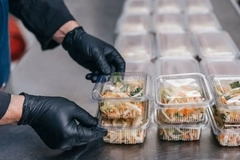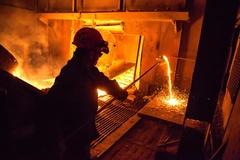The 2% Solution – Milk As A Styrofoam Superlative
20 Oct 2010

A combination of milk protein and ordinary clay may represent a biodegradable alternative to the Styrofoam and plastics we dump in our landfills.
A combination of milk protein and ordinary clay may represent a biodegradable alternative to the Styrofoam and plastics we dump in our landfills.
Scientists at Case Western Reserve University including researcher David Schiraldi have discovered a way to make a stronger, lighter, and far more biodegradable packaging option than those currently on the market.
Most plastic packing and filling products suffer from the same slippery problem: oil. Much of it is imported from other countries, but no matter its source, it ends up in the same place: a landfill. In many cases, plastics and Styrofoam either break down slowly or not at all, and in rare instances create toxic intermediary byproducts as they whither away.
Looking for a new option, the Case team turned to what appears at first to be an unlikely source: milk. In actuality, milk protein – of which 80% is a substance called casein – is already used in glue and coating materials. Unfortunately, the cow-derivative isn’t particularly strong, and a good hard rain or dip in water will degrade any product that is casein-based.
In order to improve casein’s utility, Schiraldi’s team mixed in ordinary clay and extra amounts of glyceraldehyde, the molecule responsible for ensuring that casein sticks together. The resulting substance was freeze-dried and had its water removed, placing it firmly into the category of spongy aerogels, often termed “liquid smoke” for their light and airy features.
The milk/clay hybrid was then cured in an oven and stress-tested, and was easily determined to be strong enough to operate as a packing, stuffing and insulating material. The final product is biodegradable – with 30% of it breaking safely down and away in the first 30 days.
Source: Case Western Reserve University
All content and features on this website are copyrighted with all rights reserved. The full details can be found in our privacy statement
Subscribe to our newsletters
By continuing to browse our site you agree to our Privacy Statement











